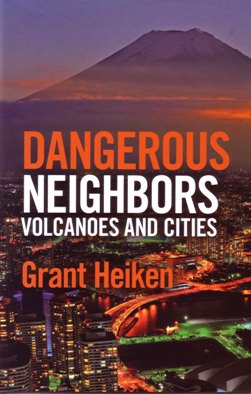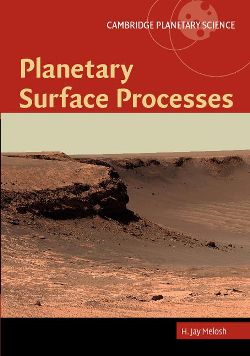Magnetic Methods and the Timing of Geological Processes

Any measurable parameter that changes through time is a potential contributor to historical interpretation of the rock record, and the various magnetic properties of rocks have more potential than most. Where would continental drift be today without apparent polar wander paths or geomagnetic polarity reversals?
SP 373 is a collection of papers from three meetings of the American Geophysical Union in 2010 and 2011. All 18 papers deal with data from sedimentary successions. The Editors’ introduction reminds us that knowledge of geomagnetic changes is 100+ years old, though appreciation of their global nature is nearer 50. The first five papers illustrate the ever-increasing stratigraphic resolution achievable by integrating polarity changes with biostratigraphy and other methods, in three IODP and two onshore Italian sections (all Cenozoic).
Mutual contradictions among datums in different sections – that bugbear of conventional stratigraphic interpretation – suggest (to the reviewer) applying multidimensional scaling methods such as CONOP as a way forward. Four papers, three on or around Tibet and one from the Nankai Trough, use geomagnetic data, again from sediments, variously to determine timing and rates of sediment source uplift, history of episodes of deformation (contributing to discrimination between alternative regional tectonic models), block rotation history (from stratigraphically changing declination), and changing sediment accumulation rates at a subduction input site. In all cases, it is the stratigraphy that provides the age control; the critical part of each study is establishing that a magnetic signal is of an age with the enclosing sediment.
The four papers in the book’s third section are more diverse than the declared theme of relative palaeointensity suggests, ranging from the extraordinary wanderings of the virtual geomagnetic pole through a Pleistocene polarity excursion, to even more recent (<3ka) secular changes used to calibrate radiocarbon dates in Sulawesi. In the final section, cyclostratigraphic analysis of magnetic susceptibility and ARM data aims to establish orbital control over sedimentation, leading to various but sadly invalid chronological and paleoclimatic conclusions.
Although the two papers by Ellwood et al acknowledge the dangers of false positives, all five studies use methods known to raise power spectral peaks above most confidence thresholds even for random data. The fact that all five cyclostratigraphy papers use suspect methods does not detract from the continuing potential of these and other geomagnetic parameters for interpreting many aspects of Earth history.
Reviewed by David Smith
MAGNETIC METHODS AND THE TIMING OF GEOLOGICAL PROCESSES: L JOVANE, E HERRERO-BERVERA, L A HINNOV AND B A Housen (Eds). 2014 Geological Society Special Publication 373, vi + 402 pp. ISBN 978-1-86239-354-7. List price: £110.00; Fellows’ price: £55.00. www.geolsoc.org.uk.
Dangerous Neighbors
 The first thing that one may notice about Dangerous Neighbors is how short the text is. Comprising only 183 A5 pages, the book could quite easily be absorbed in a day. However this has no bearing upon quality and serves only to enhance readability.
The first thing that one may notice about Dangerous Neighbors is how short the text is. Comprising only 183 A5 pages, the book could quite easily be absorbed in a day. However this has no bearing upon quality and serves only to enhance readability.
The book is arranged into several case studies of the close association of active volcanoes and population centres, rather than focusing upon individual hazards. There are good sections on the Philippines and Mexico, and examples from outside of the Ring of Fire are also given. Each chapter looks at an eruption event in terms of the different elements of the eruption (lahar, lava flow, ash plume etc), their individual and combined impact and the immediate response to the event.
Heiken then goes on to examine how each city or region developed mitigation strategies and comments upon whether these were successful in reducing the impact of future events. The case studies are given in social, economic, political and geographic context to enable to reader to better understand the nature and extent of the responses and future implications. It has to be said that chapter seven on the Pacific Northwest feels a little short in comparison to the others and pays little regard to Mt. St. Helens.
Examples are clearly explained, with minimal jargon and key points highlighted or expanded upon in separate boxed sections. There are also additional notes based upon Heiken’s own experience, which either add a more personal dimension to the facts and figures - or are completely irrelevant. A selection of excellent diagrams illuminates the text, illustrating eruptive characteristics and locations. However, the book would have benefited from the inclusion of colour photographs where possible as the small page size coupled with inconsistent image sizes results in an unfortunate loss of detail with some of the greyscale pictures.
The book’s case study format and the extended reading list provided at the back makes it a good entry-level text for students on natural hazards courses, but is pitched at such a level as to be accessible to students, experts and anyone interested in the impact of volcanic hazards.
Reviewed by Amy Ellis
DANGEROUS NEIGHBORS: VOLCANOES AND CITIES, 2013 GRANT HEIKEN. Published by: Cambridge University Press, 183pp. ISBN: 978-1-107-03923-0. www.cambridge.org
Planetary Surface Processes
 The book is divided into eleven chapters with a short overview (the ‘grand tour’), followed by five chapters (planetary morphology, strength v. gravity, tectonics, volcanism, and impact cratering) on each process as it is observed across planetary bodies. The book concludes with an additional five chapters (weathering, mass movement, wind, water, and ice) looking at increasing less prevalent surface processes.
The book is divided into eleven chapters with a short overview (the ‘grand tour’), followed by five chapters (planetary morphology, strength v. gravity, tectonics, volcanism, and impact cratering) on each process as it is observed across planetary bodies. The book concludes with an additional five chapters (weathering, mass movement, wind, water, and ice) looking at increasing less prevalent surface processes.
Melosh does an excellent job honoring the historic literature, noting many seminal publications for readers to track down if a topic piques their interest, while keeping it firmly grounded in the present-day literature. Following each chapter is a set of exercises that requires readers not only to manipulate selected equations from the preceding but also to interpret the results in open-ended thought-questions to grasp the involved processes.
The text is targeted at advanced undergraduate and postgraduate students interested in planetary geology. The material covered demands that the reader have a working knowledge of many subdisciplines of geoscience (in particular structural geology, petrology, geophysics, geomorphology, and hydrogeology), as well as to be comfortable manipulating mathematical formulae.
This book is an excellent introduction to extraterrestrial geology, with its individual chapters providing concise, in-depth reviews of concepts. This is particularly apparent in the chapters on tectonics and volcanism where a wide array of topics is covered by brief (but excellent) overviews that nicely summarize the state of the science. The figures are a mixture of line drawings and black-and-white photos with a small number of colour plates supporting key figures.
This diversity of content in this book lends strength and increases its relevancy to readers. It would make a helpful addition to the bookshelves of lecturers interested in integrating aspects of planetary geology into their curricula, the inquisitive student or professional wanting to learn about a growing field, as well anyone desiring a handy, detailed reference to many geological phenomena.
Reviewed by Carson A Richardson
PLANETARY SURFACE PROCESSES H. JAY MELOSH. Published by: Cambridge University Press. 520pp. ISBN: 978-0-521-51418-7. List price: £48.00 www.cambridge.org
Landslides: Types, Mechanisms and Modelling

In acknowledging the surge of research on landslides, slope failure and associated aspects of hazard and risk assessment in recent years, the editors clearly set out their agenda to provide a state-of-the-art summary of landslide science. In order to achieve this they have commissioned 32 chapters from 78 researchers and practitioners. Of the chapters, 12 deal with landslide types and mechanisms, 10 consider numerical modelling of slope failures and engineering measures aimed at assessing and/or reducing hazard and risk. The remaining 10 deal with individual landslides and/or those associated with specific events (e.g. Vaiont, Åknes and the Wenchuan earthquake) or with landslides in specific regions such as Hong Kong and, with considerably more geographical diversity, non-terrestrial landslides.
Individual chapters are reasonably concise, generally at about 10 to 15 pages, making each one relatively easily digestible over a lunch-break. The book is well illustrated with line drawings, photographs and computer-generated images. These are presented in black and white, but are generally well judged in that they work without the use of colour. Most of the chapters are extensively referenced, thus affording plenty of opportunity to explore the subject further. However, the referencing in some of the chapters does not really reflect the stated aim of reflecting the recent surge in landslide science. This does, however, seem to genuinely reflect the non-universality of the ‘surge’, rather than any major omissions on the part of the authors.
The proof of any text of this nature is its usefulness. Since its arrival and the submission of this review (a longer period than I intended and most certainly longer than the editor of Geoscientist desired!) I have systematically read the chapters of most interest to me in my day-to-day working life and dipped into other chapters as the opportunity arose. Importantly I have found myself returning to many of the chapters in order to check facts, assumptions and ideas on a fairly frequent basis.
If I were to have one small criticism it might perhaps be that the individual chapters form neither a coherent whole (thus providing comprehensive and logically structured guidance on all or part of the subject) nor are they a collection of individual papers. Sitting somewhere between these two extremes it would be easy to conclude that the value of the entire collection is undermined. However, this would be neither fair nor true. Most of the contributions provide an excellent summary of the area with which they deal and point to sources for further exploration.
I found this to be a very useful book and, although the cover price might dissuade one from a personal purchase, it is a vital institutional acquisition.
Reviewed by Mike G Winter
LANDSLIDES: TYPES, MECHANISMS AND MODELLING. JOHN J CLAGUE AND DOUGLAS STEAD (eds). Cambridge University Press, Cambridge, 2012. £95.00 Hardback, 420pp. ISBN: 978-1-107-00206-7. www.cambridge.org